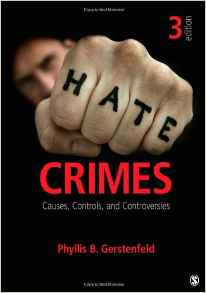“Hey, Larry, nice haircut! Is your barber blind?” Frank laughed at his own joke and then smirked when Larry came closer. A couple of drinks must have skewed Larry’s judgment, Frank figured. The little runt forgot Frank was a pretty good boxer. Well, time to remind him. As soon as Larry got close enough, Frank laughed again. “I’m gonna smear the pavement with you, twerp.” To prove his point, he socked Larry solidly in the nose.
Larry crumpled. But then he got up, nose bleeding, and pulled out a pocketknife. He opened the largest blade and held it aloft. “Get out of here before I perforate you, Frank.”
Frank scoffed, danced to the right, and landed another blow, this one on the side of Larry’s head. When Larry fell this time, he knocked his skull against the edge of the bar. He twitched a few times on the ground before going still.
Frank looked up to see the bartender pointing a gun at him. “Sit tight,” said the bartender. “Police are on the way.”
“Yeah, whatever. It was self-defense anyway.”
Frank’s sounding awfully cavalier there. He’s going to wise up after he talks to a lawyer, because chances are he won’t be able to claim self-defense.
Self-defense is an old defense, one of the many that Americans adopted from England. It’s based on the premise that a person shouldn’t be held criminally liable for protecting himself, and it’s fairly commonly used. But there are rules as to when it applies.
One of those rules is that a defendant can’t use the defense if, like Frank, he initiated the violence. So Frank is out of luck already. But there are other limitations too.
- The person must reasonably believe he had to use force to protect himself. It’s okay if he was mistaken in the belief (“I thought I saw him reaching for a gun”) as long as the mistake was reasonable.
- The amount of force used must be proportionate to the threat. You can’t shoot someone who’s threatening to slap your face.
- The threat must be imminent. You can’t use this defense if the other person says, “Someday I’m going to kill you!”
So one corollary to the defense is that the threatened person must retreat if he can safely do so. It sounds as if Frank could have walked away from Larry, so he’s again out of luck. But there are two exceptions to this. One is called the castle exception, which holds that a person need never retreat in his own home. The other exception is recognized in some jurisdictions but not others, and is most popularly called the stand your ground doctrine. It holds that a person need not retreat even if he can safely do so, and it received a lot of attention during George Zimmerman’s trial for his fatal shooting of Trayvon Martin.
Self-defense extends to the right to protect other people. If Alice sees Bob being beaten by Carl and punches Carl in order to save Bob, she may be able to use the defense. But only if Bob himself could have used it! So if instead the bartender saw Larry pull the knife on Frank and, unaware that Frank started it, shot Larry, the bartender would be out of luck. So be careful before rescuing someone!
Self-defense does not include the right to protect property. You can’t use deadly force to keep someone from stealing your stuff.
This defense allows a lot of plot possibilities. Was your character reasonable when he mistakenly believed the other guy was reaching for a gun? Was the threat truly imminent? Did your character use an appropriate degree of force under the circumstances? Who intervened in the fight and did she have a right to?
As for Frank, he better hope that Larry pulls through. Otherwise he’s looking at a long stint in prison.

 Before I get into particulars, I’m going to plug my own book. I’m currently working on the 4th edition, but if you want to know a lot of details about hate crime, I suggest
Before I get into particulars, I’m going to plug my own book. I’m currently working on the 4th edition, but if you want to know a lot of details about hate crime, I suggest